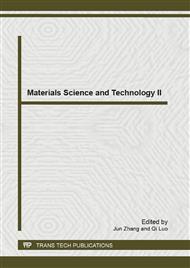p.595
p.600
p.608
p.614
p.620
p.626
p.632
p.638
p.643
Composite Joints Design - Migrating from Finite Element Models to Component Models
Abstract:
When developing innovative structural systems, designers are faced with a difficult problem when addressing connection design. While the provisions for the design of members and their failure modes are well understood and codified, the design and performance of the connections are not. Current specifications require designers to provide evidence, through either experiments or analysis and combinations thereof, that these connections will perform as intended. In this paper, the design of an innovative type of connection to concrete-filled tube columns is described. These connection are partially-restrained, contain a new type of material (shape memory alloys), and are geared for high seismic loads making their design a very challenging proposition without the aid of physical testing. The design is developed based on detailed finite element analyses of the connection region and elements which lead to simplified spring models suitable for design of entire frames. The results indicate that through careful and rigorous analyses, robust simplified connection models can be developed even for complex connections.
Info:
Periodical:
Pages:
620-625
Citation:
Online since:
July 2013
Authors:
Price:
Сopyright:
© 2013 Trans Tech Publications Ltd. All Rights Reserved
Share:
Citation:


